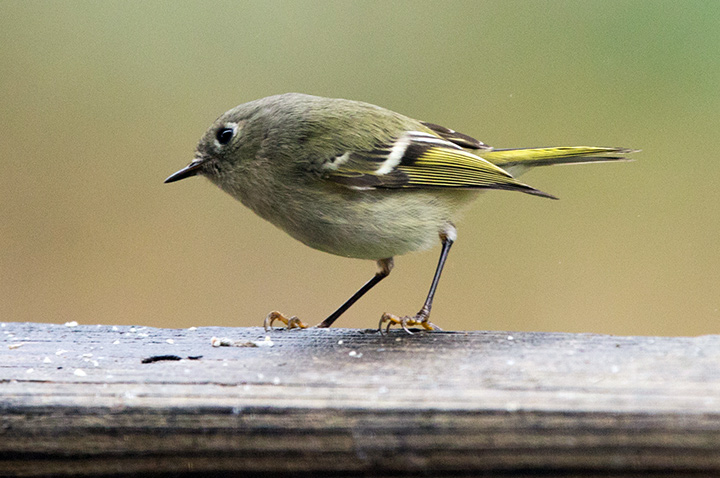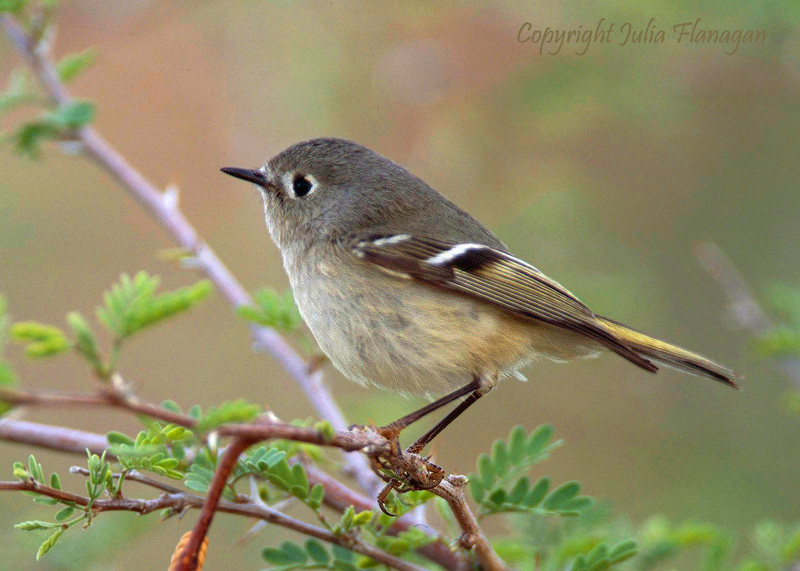|
|
Ruby-crowned Kinglet The red patch on the top and back of the head that gives this species its name is not easily seen unless the adult male is excited or raising it in his display to other birds. Otherwise both sexes of this very small bird (only up to 4.5 inches long) are not very conspicuous, with coloration of brownish-green and grey above and light-colored with rustiness below. The white bars on its darker wings emphasize its habit of constantly flicking its wings. if you get close enough to see it, an incomplete white eye ring gives this bird a wide-eyed appearance. The Ruby-crowned Kinglet is a winter resident in Virginia. In the spring, it migrates north from Mexico, the southern US and the East and West coasts to breed in the coniferous forests of Canada and the Rocky Mountain states of the US. Kinglets feed mostly on insects and insect eggs that they pick off twigs, leaves, needles and bark. In the winter they may also eat some berries and seeds. Their nests are open cups made of various materials placed on, or hanging from, a tree branch. The clutch consists of up to a dozen small eggs that together may weigh as much as the mother bird herself. The male brings food while she incubates the eggs, and both birds feed the young. The equally tiny Golden-crowned Kinglet likewise breeds in the far north and west of North America , but also on the Appalachian mountains. It eats insects it finds on trees but may join groups of small birds that come to feeders in winter. Instead of a red patch, adult males have an orange patch on their heads, while the female and juvenile birds have yellow patches. They are also not as green as Ruby-crowned Kinglets, and have black and white horizontal stripes on their heads. |
Home | Upcoming Events | About Us | Resource Issues | News | Local Contacts Maps | Photos | Publications | Youth Education | FAQ's | Links | Membership |







